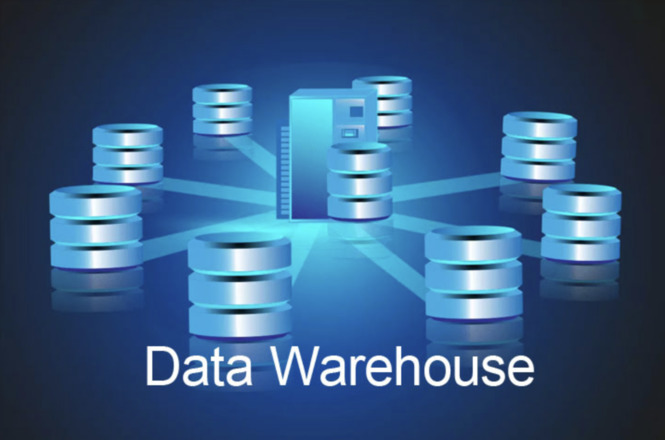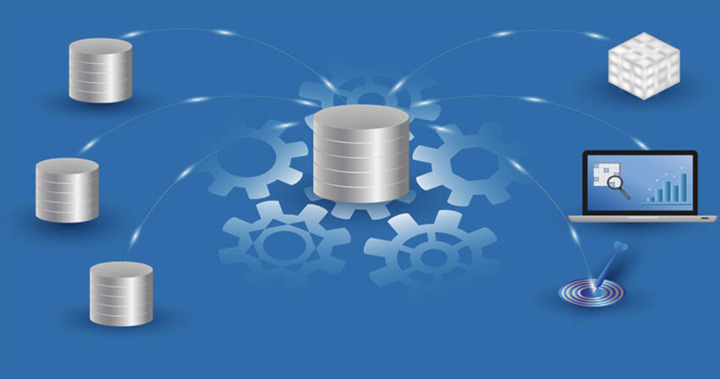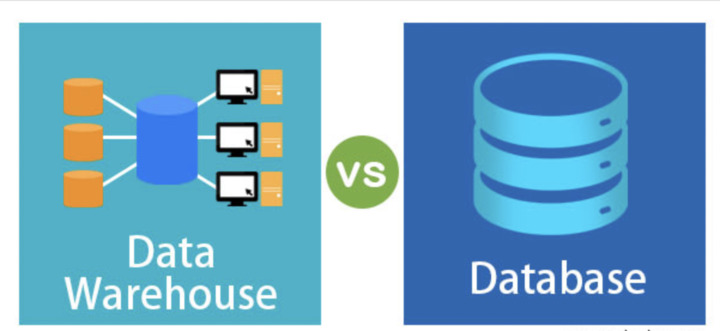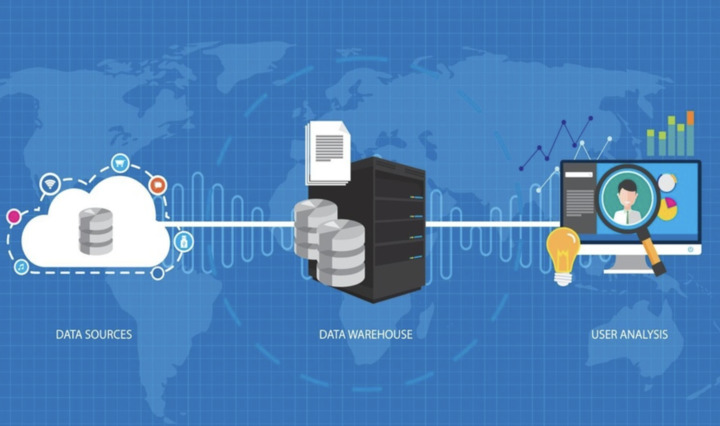Explaining the Concept of Data Warehousing

As businesses collect and generate an ever-increasing amount of data, managing and analyzing it can become daunting. This is where data warehousing comes into play, providing a comprehensive solution for organizations to store and analyze their info in a structured and efficient manner.
In this article, we will explore the concept of data warehousing, discussing its definition, purpose, and the benefits it can offer businesses. We will also explore the challenges organizations may face when implementing warehousing and the strategies to overcome them. This article is intended to provide readers with a fundamental understanding of data warehousing, how it works, and its significance in the current business landscape.
What is Data Warehousing?
Data warehousing is a technique used by organizations to manage and store large volumes of information in a centralized repository. The primary goal of warehousing is to provide decision-makers with a single, reliable source of info that can be used to support business decisions. This includes identifying trends, making predictions, and understanding customer behavior, among other applications. Thus, warehousing is essential for businesses that efficiently manage and analyze large volumes of info from various sources.
The Main Components of a Data Warehouse

A warehouse is a complex system comprising several interconnected components that work together to store, manage, and analyze large volumes of info.
The main components of a warehouse include:
- information sources,
- ETL process,
- info storage,
- metadata,
- OLAP tools.
Data Sources
Info sources are one of the main components of a data warehouse. Information sources are the various systems, applications, and databases that generate and store info. These sources can include operational systems, external sources, and other warehouses.
Operational systems are the primary information source in most organizations, including applications such as customer relationship management (CRM) systems, enterprise resource planning (ERP) systems, and other transactional systems. These systems collect and store info in real time, ensuring it is frequently updated.
External sources include information from outside the organization, such as market research info, social media info, and other sources that may be relevant to the organization’s operations.
Information from these sources must be extracted, transformed, and loaded (ETL) into the data warehouse before it can be used for analysis. The ETL process involves extracting info from various sources, changing the info to fit the warehouse schema, and finally loading the transformed info into the warehouse.
The information from the various sources can be heterogeneous, meaning it can be in different formats and structures. As a result, info integration is a significant challenge in warehousing, and it requires info analysts and developers to ensure that the info is transformed and loaded correctly.
ETL Process
The ETL process is one of the main components of a warehouse. ETL stands for Extract, Transform, and Load. It is the process of moving info from various sources, transforming it into a consistent format, and loading it into a warehouse.
The ETL process is critical to the success of a warehouse because it ensures that the info in the warehouse is accurate, consistent, and up-to-date. However, the ETL process can be complex and time-consuming, especially when dealing with large volumes of info. As a result, many organizations use automated ETL tools to streamline the process and reduce errors. In addition, these tools can help with tasks such as data profiling, cleansing, and mapping, making the ETL process more efficient and reliable.
Data Storage
The data storage component of a warehouse is designed to provide fast and efficient access to large amounts of information. It typically uses a specialized database management system optimized for querying and reporting.
There are several different types of information storage that may be used in a warehouse.
- One common approach is to use a relational database management system (RDBMS) to store the info in a structured format. This approach provides a high level of flexibility and allows for complex queries and reporting, but it may not be well-suited for handling large volumes of unstructured info, such as text or multimedia.
- Another approach is to use a warehouse appliance, a specialized hardware and software platform designed specifically for warehousing. Data warehouse appliances are typically optimized for processing large amounts of information quickly and efficiently. In addition, they may incorporate features such as massively parallel processing (MPP) and columnar storage to achieve high performance.
In addition to the storage technology itself, information storage in a warehouse also involves using indexes and other structures designed to optimize query performance. For example, these structures may include bitmap indexes, materialized views, and other techniques that can help speed up queries and reduce the time required to retrieve info from the warehouse.
Metadata
Metadata serves as a catalog of all the info sources, structures, and transformations in the warehouse, making it easier for analysts and developers to understand and use the information.
In a warehouse, metadata typically includes info about the information sources, such as the info types, location, and format. It also provides info about the information structures, such as tables, columns, and relationships. Additionally, metadata includes information about the transformations applied to the info during the ETL process, such as filtering, sorting, and aggregating.
Metadata is important for several reasons.
- First, it provides a common language for describing the warehouse’s info, making it easier for different teams and departments to collaborate and share information.
- Second, it helps ensure info quality by providing information about the lineage and history of the info, which can help identify errors and inconsistencies.
- Finally, metadata can help improve the performance of queries and reports by providing information about the structure and organization of the info in the warehouse.
Metadata can be stored in various formats, including XML, JSON, or in a database management system. There are also specialized metadata management tools available that can automate the process of capturing, organizing, and maintaining metadata in a warehouse. These tools can help ensure that metadata remains accurate and up-to-date, even as the info in the warehouse evolves.
OLAP Tools
OLAP (Online Analytical Processing) tools are designed to facilitate multidimensional analysis, enabling users to explore information from multiple perspectives and dimensions. It provides a graphical interface allowing users to interactively explore info by drilling into different levels of detail, slicing and dicing info across multiple dimensions, and creating customized reports and visualizations.
OLAP tools also provide a range of analytical functions, such as:
- aggregating,
- filtering,
- sorting information,
- advanced info mining, and predictive modeling capabilities.
These functions allow users to uncover hidden patterns and insights in the info, identify trends and outliers, and make informed decisions based on the info.
There are many OLAP tools available in the market, ranging from simple spreadsheet-based tools to complex enterprise-level software solutions. Some popular OLAP tools include:
- Microsoft Excel,
- Tableau,
- SAP BusinessObjects,
- IBM Cognos,
- Oracle Essbase.
OLAP tools can be integrated with other info visualization and reporting tools to provide a comprehensive solution for analyzing and presenting info from a warehouse.
The Differences Between a Data Warehouse and a Database

While both warehouses and databases are used to store and manage information, there are significant differences between the two.
A database is a collection of information organized in a specific format, usually in tables with rows and columns, and is designed to support transactional processing, such as inserting, updating, and deleting info in real-time. Databases are optimized for processing small and frequent transactions, and the information is typically normalized, meaning that it is organized into separate tables to reduce redundancy and improve info integrity.
On the other hand, a warehouse is a centralized repository designed to support analytical processing, such as querying, reporting, and data mining. Data warehouses are optimized for processing large volumes of info, typically from multiple sources, and are organized to support complex queries and analysis. The info in a warehouse is generally denormalized, meaning that it is organized into a single, comprehensive structure to enable fast querying and reporting.
Another critical difference between a database and a data warehouse is how information is stored and managed. In a database, information is stored in a transactional format, which means that it is constantly being updated and changed as new transactions are processed. In a warehouse, info is loaded in batches, usually on a regular schedule, and the info is not updated once it is loaded. This enables warehouses to maintain a historical info record, making it possible to analyze trends and patterns over time.
Benefits of Data Warehousing

Data warehousing provides several benefits to organizations, including:
- Centralized Data
A warehouse allows organizations to consolidate information from various sources into a single, centralized location. This makes it easier to access and manage data, leading to more efficient operations and better decision-making.
- Faster Access
Warehousing enables faster access to information. By storing information in a structured and optimized manner, info warehouses can retrieve information quickly, even when dealing with large information sets.
- Better Decision-Making
With a warehouse, organizations can make informed decisions based on accurate and up-to-date information. By analyzing information trends and patterns, businesses can identify opportunities, reduce costs, and make better decisions.
- Improved Info Quality
Data warehousing helps improve information quality by consolidating and standardizing information from various sources. This ensures that information is consistent, accurate, and complete.
How Does Data Warehousing Work

The process of building a warehouse typically involves three key steps: information extraction, transformation, and loading, which are commonly referred to as ETL.
- Data Extraction
The first step involves extracting information from multiple sources, including operational databases, flat files, spreadsheets, or external systems. The information is usually extracted using specific tools or software to connect to these sources and retrieve the required information. The extracted information may be in various formats and may need to be converted into a standardized format for further processing.
- Data Transformation
The second step involves transforming the information to make it consistent and usable for analysis. This process involves cleaning, filtering, integrating, and formatting the information according to the business requirements. Data transformation may also include information enrichment, such as adding new calculated fields or deriving new metrics from the existing information.
- Info Loading
The final step involves loading the transformed information into the data warehouse. This process may involve several steps, including validation, indexing, and info partitioning. The loaded information is then stored in a format that can be easily accessed and analyzed using business intelligence tools.
The Process of Organizing and Storing Data in Storage
Data in a warehouse is typically organized and stored in a multidimensional info model called a data cube or an OLAP cube. The cube is made up of dimensions, representing the various ways information can be analyzed, such as time, geography, product, and customer. The cube also contains measures (the numerical values that can be analyzed), such as sales revenue or inventory levels.
Organizing info into a cube involves selecting the relevant information from the source systems, transforming it into a consistent format, and loading it into the cube. The cube is designed to provide fast access to information, allowing users to analyze and report on large amounts of information quickly.
The organization and storage of info in a warehouse are designed to support complex queries and analysis rather than transaction processing. This means that information is optimized for read access rather than write access and that the schema facilitates reporting and analysis rather than information entry and update.
Challenges of Data Warehousing

Warehousing implementation can be challenging for organizations. Some of the challenges they may face include:
- Data quality
Ensuring the accuracy, completeness, and consistency of the information can be challenging, especially when information is obtained from various sources. Poor info quality can lead to incorrect analysis and decisions.
- Info integration
Integrating information from different sources and systems can be complex and may require standardization and transformation to ensure consistency across the info.
- Cost
Building and maintaining a warehouse can be expensive, requiring investment in hardware, software, and skilled personnel.
- Resistance to change
Resistance to change from employees can be a challenge when implementing a data warehouse. Employees may resist adopting new technologies or processes or may not understand the importance of the data warehouse.
Best Practices for Data Warehousing
Implementing a successful warehousing strategy requires careful planning, execution, and management. Here are some best practices that can help organizations succeed in their warehousing efforts:
- Start small
Implementing a data warehouse can be a significant undertaking, so it’s essential to start small and focus on a specific business area. This allows organizations to test their warehousing strategy on a small scale and adjust as needed before expanding to other areas.
- Involve stakeholders
Data warehousing affects multiple business areas, so it’s important to involve stakeholders from different departments in the planning and implementation process. This helps ensure that the data warehouse meets the entire organization’s needs and not just the requirements of one department.
- Establish clear goals
Establishing clear goals and objectives for the warehouse is essential for its success. This includes defining the scope of the project, the expected outcomes, and how the data warehouse will be used to support business decisions.
- Focus on info quality
The data warehouse’s quality is critical for its success. Establishing information quality standards and processes is important to ensure the information is accurate, complete, and consistent.
- Keep it simple
Warehousing can be complex, but it’s essential to keep the design and implementation as simple as possible. This makes it easier to maintain and ensures that users can easily access and understand the information.
- Plan for growth
Info volumes are growing rapidly, so it’s important to plan for future growth when designing the data warehouse. This includes selecting technologies and architectures that can scale as information volumes increase.
- Continuously monitoring and optimizing
Warehousing is an ongoing process, so it’s important to monitor and optimize the system continuously. This includes monitoring info quality, performance, and user adoption and adjusting as needed.
Conclusion
In conclusion, warehousing is a crucial aspect of modern business intelligence and analytics. It enables organizations to store and manage large amounts of information efficiently, providing faster access and better decision-making capabilities. While implementing a warehouse may come with challenges, following best practices and overcoming them can lead to successful warehousing. Ultimately, warehousing can lead to improved operations, increased revenue, and a competitive advantage for businesses in various industries.
